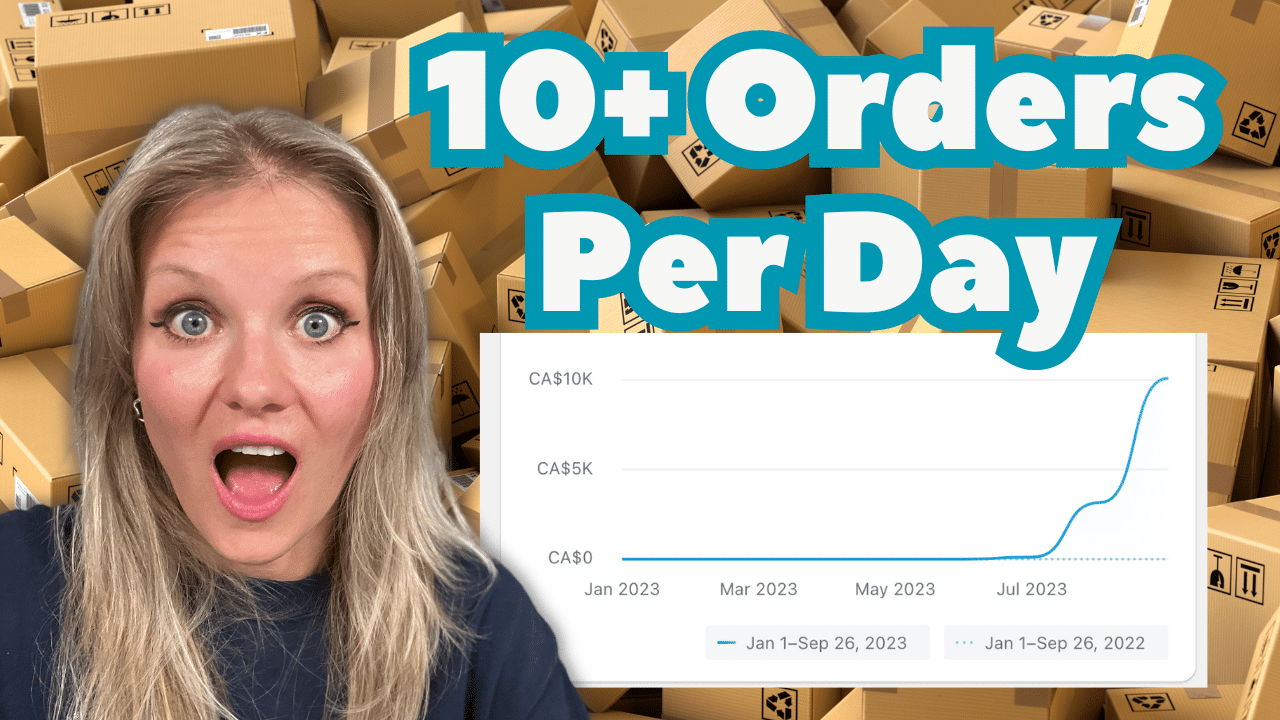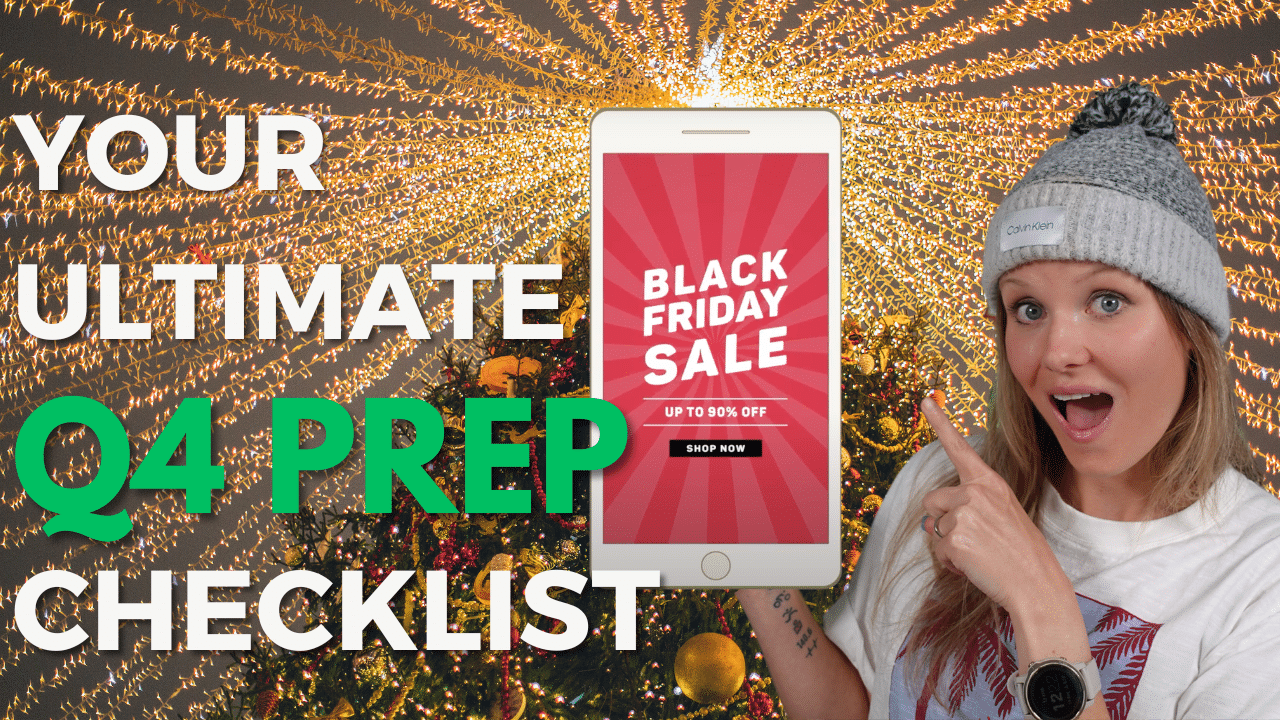Increase Product Sales On Your Website
If you’re an online merchant for a small business, no matter whether you’re selling stuff on Etsy, Shopify, eBay or Amazon — there is one thing that is common to all of us: we want to increase product sales.
People are now consuming more information online than offline. In fact, the average person spends 7 hours every day online. One of the key aspects of any successful e-commerce website is to advertise and market your product effectively. With numerous choices that are available nowadays in marketing, it can be very difficult to select the right one.
Marketing your product online to increase sales can be tricky, but in this blog we’re going to explore exactly how you can reach your goals! Check out our 13 top tips below that will help you gain your 1st or 1000th sale. No matter your size or objectives, these have proved successful for a variety of businesses selling products online.
13 Ways You Can Increase Your Online Sales
1. Create An Incredible Customer Experience
Did you know that 49% of consumers have left a brand in the past year due to poor customer experience? CX is everything on your website that impacts how a customer may feel about your product. One click and in an instance people will have a perception of your brand, and most importantly whether they like it and want to make a purchase. You need your website to be user-friendly with clear navigation, have a personal touch for your target audience, emotive copy and an easy checkout process.
Your online shopping experience needs to be convenient and hassle-free, rather than irritating and time-consuming. Your customers will appreciate it, and the more you can do to make the whole process a good experience for them, the more they are likely to come back in future.
2. Add A Chat Feature
Incorporating a chat feature into your website or online store can be the perfect way to assist people looking for customer service. This communication tool can perform as an automatic pop-up offering help to visitors, or simply sit in the corner of the screen ready for potential customers to interact with.
Rather than leaving your website for competitors when people run into a concern or issue, they can have the answer quickly by this easy-to-use communication tool. Customers who use live chat are 2.8x more likely to convert than those who do not use live chat support; this shows they key part these can play in increasing sales for a product or service.
3. Include Clear Call To Actions (CTAs)
CTAs are used to drive an action for visitors to complete; whether that be encouraged to buy a product, sign up to a subscription, or make contact. High quality call to actions will have a clear mission with bold copy to provoke emotion, along with vibrant colors to stand out as buttons, particularly on landing pages.
When selling a product online, you may include a button from the get-go asking visitors to ‘Buy This Now!’. This will not only push people to make a purchase, but also help with the customer experience and ease in navigation to checkout pages.
4. Include Imagery & Video Of Your Product
Having images of your product on your website is essential to converting visitors. People want to see the product being used by your buyer’s persona just like them, so they can get a clear feel for how they may use it in their daily lives. Studies have shown that people are much more likely to consider a business where images and video are used.
Not only is this effective for your website design, but also SEO purposes with the use of alt-tags. If you add a relevant alt-tag to the image of your product, then it may appear in google search results when people are looking for your product.
5. Add A Lead Capture Form To Your Website
A lead capture is used to gather information on your leads, for example their email address, name and number. This is a great way to understand your audience and build relationships with them, and also offer discounts or a type of rewards program in return. These are often used on landing pages or beside blog posts for people to fill in easily.
With this information, you can then set up an email newsletter including content on your product to push for more sales online. You can then retarget people who may not have made a purchase before and encourage them to do so in the future.
6. Evaluate & Track Website Engagement
Understanding exactly where people are leaving your website and the interaction that is leading to this is key to making improvements. Blindly updating your website when lacking sales may lead you to change areas which are in fact working, so you need to start cracking down on tracking website activity accurately. Tools such as Google Analytics and Search Console are most popular for this, as they can report on your site traffic, issues and analytics on site impressions and clicks.
Once you understand how well your website is performing with visitors, you can begin editing and updating areas of the site that may be causing people to leave before making a purchase. This will in turn hopefully reduce your bounce rate and increase the conversion rate of your product.
7. Implement SEO On Your Online Store (Search Engine Optimization)
Ecommerce SEO is where you can optimize your website to climb up Google rankings to the top. Performing keyword research will open up the basis for your SEO strategy so that you can start optimising product and category pages.
Your product content needs to be clear and detailed, along with bold, obvious title-tags. Customers need to know the exact contents of the page from this, so it needs to get the product across within just a few words. Studies have also shown that longer URLs perform worse in terms of SEO, therefore it’s important to make this short and punchy.
Link building is another driving force for success in SEO. Internal, outbound and backlinks are needed to build credibility, add trust and back-up content on your website. Internal links help search engines understand your website and give crawlers a structure for your site. These may be used to link to other relevant products on your website.
You should also invest time in strategies to find backlinks; this is where other sites link to you. One way you may obtain these links is by reaching out to bloggers to share the news about a new product you are selling, or asking people or businesses to review your product online.
8. Include Reviews & Add Social Proof
Reviews can have a huge impact on whether visitors make a purchase or not. Whenever people are spending money they want to have the confidence that it is not going to waste. Having an obvious section for this on your website, product pages and Google will allow people to gain trust with your brand and have less reservations when buying your product. They also help improve search rankings and can have a great impact on your SEO.
This social proof can have an incredible psychological impact by giving people that fear of missing out. Individuals are much more persuaded into taking action if they can see others have had a positive experience with a business.
9. Add Various Payment Methods
Nowadays we see various payment methods on websites; whether that be debit card, credit card, Klarna, Clearpay, PayPal, or ApplePay. Having a variety of options caters to a much wider audience and is very likely to increase product sales on a website. People like having the security of paying in sections and paying in their own time.
It can also be impactful to include a statement including ‘Money Back Guarantee’. This can satisfy customers that you have your full trust in the quality of your product. It also adds a safety net for buyers that may be concerned with spending money and the purchase not living upto expectations.
10. Invest In A Content Marketing Strategy
This form of marketing involves sharing various content on digital platforms and distribution channels in order to build a following and buyers. For the selling of products, this can be highly successful as you can post images of it in use, live videos, Q&As and blog posts surrounding the product. You may also send freebies of the product to individuals with large followings on social media, therefore giving you the chance to reach a much wider audience than before.
Not only does this advertise your product and let people know what you are selling, but it also shows you are active online and value your audience. It can also be useful to share insights surrounding the topic of your product as this is an area your audience is clearly interested in. For example, if you are selling a piece of wearable technology you may have a stream of content for ‘new innovative tech’ that your audience will get excited to see. This will both pull in followers and retain existing customers to keep making purchases with your business.
11. Optimise Your Website For Mobile
A huge percentage of visitors (over 80%) will be using their mobile to access your website. Having a site design that is responsive for multiple devices is key to keeping visitors whilst also positively impacting your SEO.
Make sure that your design adapts and can live up to the same standards of your website on desktop. If some content is hiding, buttons are missing or pages are not loading, then it is highly likely that people will dismiss your site and move onto the next one. Having a responsive design for mobile shows professionalism and care towards your business, which a potential customer will want to see before making a purchase with you.
12. One-Click Upselling
Upselling accessories when reaching check-out can be a great way to upgrade your customers experience with a product, whilst increasing your revenue. One example may be if the product you are selling is a t-shirt, and a pop-up appears including the option to buy a 3-pack of this item of clothing for 30% off. This not only increases your average order value and profitability per order, but also customer satisfaction and the experience buyers have with your brand.
13. Invest In PPC
Paid advertisement can be useful for people looking to get quick sales on their products. This involves techniques such as Facebook and Google Ads, where you can have your product placed in front of your target audience and people looking for relevant products.
You will often pay for each time someone sees your ad, yet can set relevant budgets to keep within your desired spend. Make sure to include powerful copy that best matches your needs, engaging imagery and links to help people make a purchase.
Boost Your Sales Online Now!
Today, you can find a variety of ways to increase the number of people who visit your website and the way in which they look at your product. Since every website is unique and has different products, there cannot be one solution for all businesses. However, as you can see from the list above, there are many options that you can use to increase your sales.
So, which technique do you think is best for increasing online sales? Which one do you think will give you the highest return on investment? Any of these tactics can be used to increase online sales, but it really does depend on your business, product and what works best for your budget.
Increase Product Sales On Your Website With Launch & Scale
If you’re now in a position where you are looking to scale your brand and boost sales, then you have come to the right place! Our team helps businesses grow and gain revenue, using methods such as paid Facebook and Google ads, personalized website conversion strategies, and powerful email marketing. Partner with us by applying here and join a session with our team to find out if we are the right fit.





